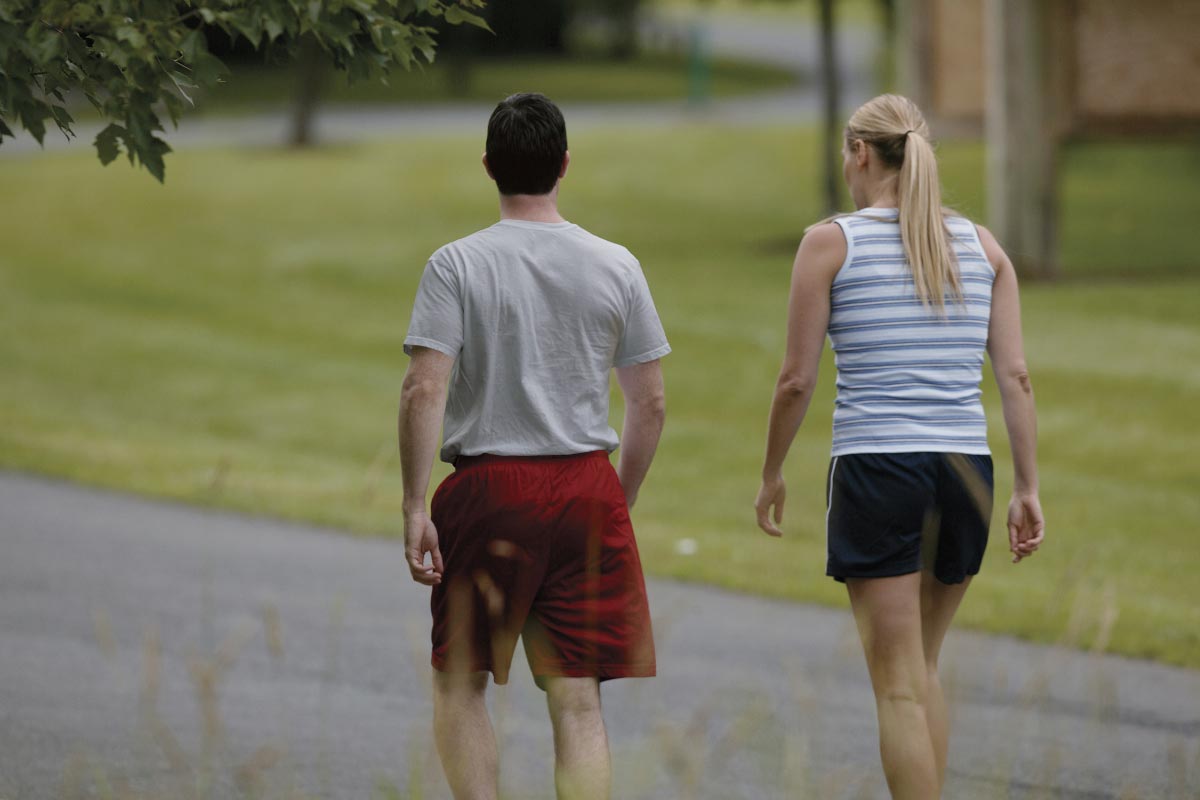 Parler
Parler Gab
Gab
- Increasing walking pace by just 14 steps per minute can significantly improve mobility for older adults, helping them maintain independence and avoid frailty.
- Seniors who walked briskly (100 steps/minute) saw a 65 percent improvement in mobility, compared to 39 percent in those walking leisurely (77 steps/minute). The approach is low-cost and requires no special equipment.
- Affecting 15 percent of Americans over 65 (with 45 percent at risk), frailty leads to hospitalizations, nursing home admissions and strained healthcare systems.
- Unlike unreliable heart rate monitors, step-based targets (e.g., 100 steps/minute) provide a simple, measurable way to gauge moderate-intensity exercise for seniors.
- Retirement communities and families can easily implement this strategy using affordable devices like pedometers, offering a practical way to combat frailty as the aging population grows.
The silent epidemic of frailty
Frailty isn't just about aging — it's a medical condition marked by exhaustion, muscle loss, slow movement and frequent falls. Roughly 15 percent of Americans over 65 are frail, and another 45 percent are at risk. Left unchecked, frailty leads to hospitalizations, nursing home admissions and a loss of independence that devastates families and strains healthcare systems. For decades, doctors have urged seniors to stay active, but vague advice like "take a walk" hasn't been enough. This study changes that by pinpointing an exact target: increasing walking speed by 14 steps per minute. For someone averaging 80 steps per minute, that means hitting 94 — a brisk but manageable pace that can be tracked with a basic pedometer or smartphone.Why counting steps beats heart rate monitors
Traditional exercise metrics often fail older adults. Heart rate monitors become unreliable for seniors on blood pressure medications, and subjective measures like the "talk test" (walking fast enough to make singing difficult but talking possible) are inconsistent. Step counting, however, is simple, objective and accessible. Previous research shows that 100 steps per minute equals moderate-intensity exercise — a key threshold for health benefits. The Chicago study used thigh-worn accelerometers to confirm that seniors who hit this target saw real-world improvements, like walking farther in a six-minute test — a strong predictor of independence.The experiment: Fast vs. comfortable walkers
The study divided participants — averaging 79 years old — into two groups. Both walked three times a week for 45 minutes, but one group was told to keep a “comfortable” pace while the other was encouraged to push their speed safely. The results were striking: The faster group averaged 100 steps per minute, while the relaxed group stayed at 77. More importantly, those who increased their pace by at least 14 steps were far more likely to improve mobility. The speed boost itself — not just the encouragement — was what mattered.A blueprint for retirement communities and families
The implications are immediate. Assisted living facilities, senior centers and families can adopt this approach with minimal resources. Instead of generic “gentle exercise” classes, programs can set personalized step goals and track progress with affordable devices. Dr. Daniel Rubin, the study's lead author, emphasized practicality. "People who haven't experienced frailty can't imagine how big a difference it makes to be able to not get tired going to the grocery store or not need to sit down while they're out."A national solution for an aging population
America's 65+ population will double by 2060, making frailty prevention urgent. Medicare spends billions annually on fall-related injuries alone. This research offers a rare bright spot: a free, scalable intervention that empowers seniors to take control of their health. For older adults, the message is clear: Walk a little faster. Those extra steps could keep you out of a nursing home and in the life you love. Watch this video about the benefits of walking for all ages. This video is from the andreash channel on Brighteon.com.More related stories:
More tech for the elderly: New "smart" cane analyzes your walking gait to reduce risk of falling. No walking dead here! Walking benefits the brain and prevents cognitive decline. The amazing power of walking. These boots were made for walking: Increase your walking time to enjoy multiple long-term health benefits. Walking can improve memory and reverse muscle loss. Sources include: Studyfinds.org News-medical.net Uchicagomedicine.org Brighteon.comThe ancient superfood fenugreek bridges culinary delight and holistic healing
By Ava Grace // Share
Walking just 7,000 steps a day cuts mortality risk nearly in half, research reveals
By Cassie B. // Share
Pistachios at night rewire gut microbiome, may prevent diabetes
By Cassie B. // Share
Evidence suggests verbal fluency and sleep quality are key predictors of longevity
By Willow Tohi // Share
Strength training’s cognitive payoff: How muscle fitness may shield against Alzheimer’s
By Willow Tohi // Share
Reviving ancient remedies: The essential oil renaissance in modern times
By Belle Carter // Share
Governments continue to obscure COVID-19 vaccine data amid rising concerns over excess deaths
By patricklewis // Share
Tech giant Microsoft backs EXTINCTION with its support of carbon capture programs
By ramontomeydw // Share
Germany to resume arms exports to Israel despite repeated ceasefire violations
By isabelle // Share










